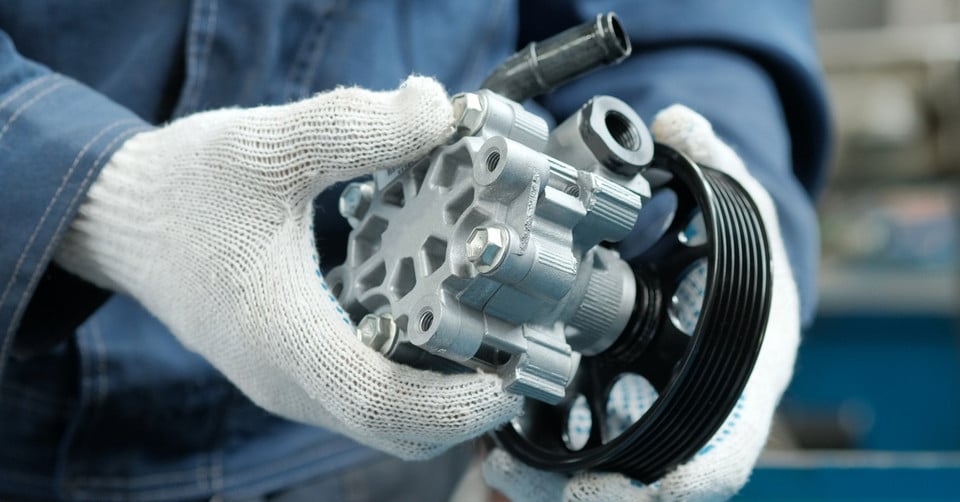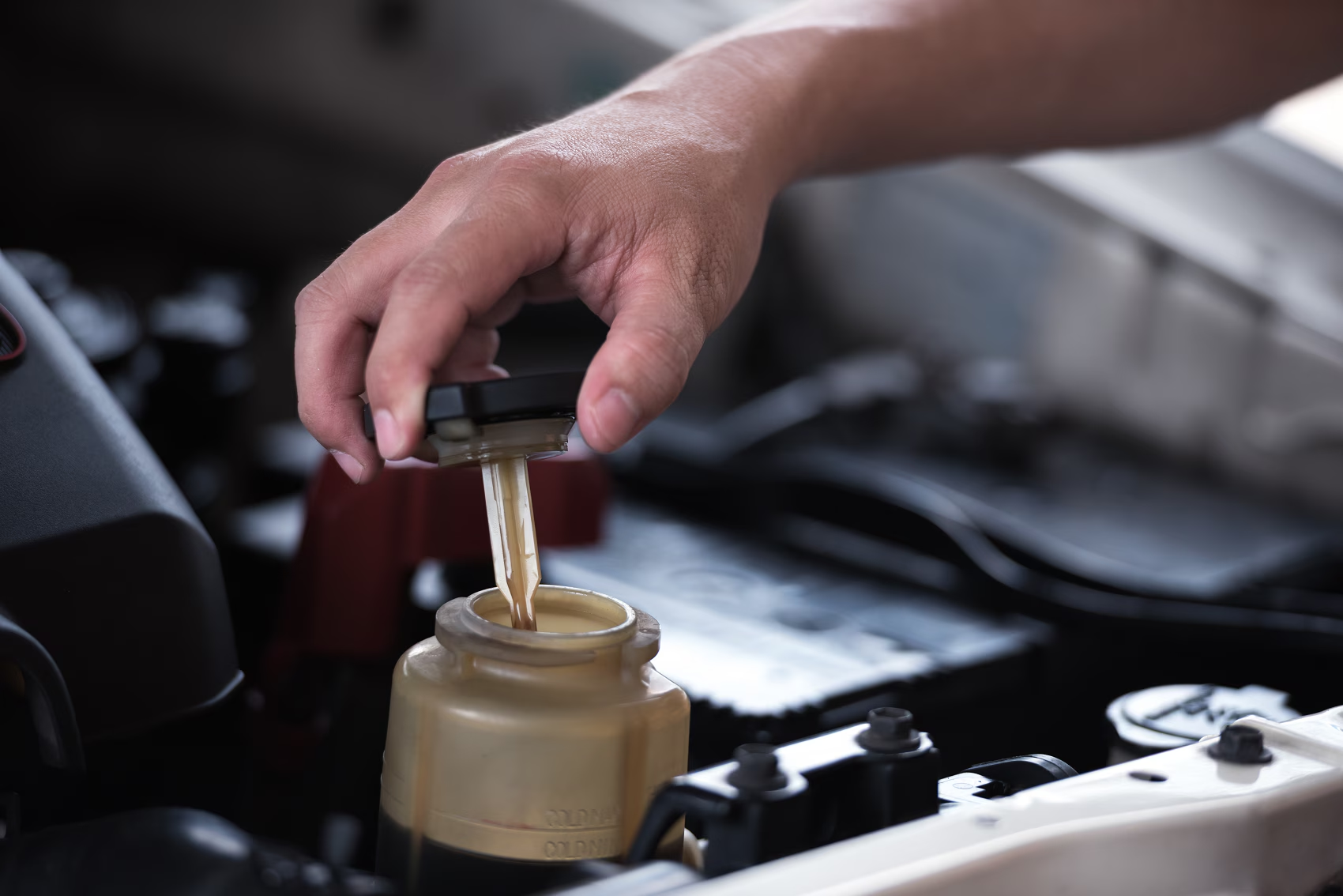New Power Steering Pump Whining? Here’s Why & How to Fix It
Posted on September 21, 2025

You just replaced your power steering pump, expecting buttery-smooth steering—only to hear that annoying whining noise return. What gives? A brand-new power steering pump whining isn’t normal, but it’s fixable. At CarHub Caledon Chrysler, we’ve solved this headache for countless drivers.
In this guide, we’ll go over the most common reasons behind the noise, how to troubleshoot them, and what you can do to get your car steering quietly and smoothly once again.
What is Power Steering Whine and Why Does It Happen?

Before fixing the issue, you need to understand what power steering whine is and why it happens. This whining noise usually shows up when you turn the steering wheel while the engine is running.
It’s often caused by something called cavitation, when air bubbles form and collapse in the power steering fluid as it moves through the pump. But it’s not always just air; mechanical problems, like a failing pump or a clogged filter, can also lead to the same whining sound.
While it might seem like just a minor annoyance, a whining noise can be a warning sign of trouble in your power steering system. It may lead to reduced steering assist, making the steering feel stiff or jumpy.
This can affect how safe and comfortable your drive feels. If your car is fighting back when you turn the wheel, or the response is unpredictable, it’s a good idea to get it checked before it becomes a bigger issue.
Common Causes of a New Power Steering Pump Whining

If your new power steering pump is still whining, it’s likely caused by an issue somewhere in the system rather than the pump itself. Several possible culprits can be behind that high-pitched noise. Understanding what these are can help you fix the problem before it turns into a bigger repair.
1. Trapped Air in the Power Steering Fluid or Pump
Air bubbles in the power steering system can interrupt the smooth flow of fluid, creating a whining or groaning noise. This often happens after a new pump has been installed, especially if the system wasn’t properly bled.
If you see frothy or bubbly fluid in the reservoir, trapped air is likely the issue. The solution is to bleed the system and make sure all hose connections are tight to prevent air from sneaking back in.
2. Old or Contaminated Power Steering Fluid
Even with a brand new pump, using old or dirty fluid can cause problems. Over time, power steering fluid breaks down and picks up debris, which can damage the pump and make it noisy.
A fluid flush and replacement with clean, manufacturer-recommended fluid usually solves this issue and helps keep your new pump in good condition.
3. Cavitation
Cavitation occurs when air mixes with power steering fluid, forming tiny vapor bubbles that implode under pressure. This creates that familiar whining sound.
It's often caused by air leaks in the return line or weak pressure at the inlet side of the pump. Inspecting hoses and connections for cracks or looseness is a good first step in fixing this issue.
4. Worn-Out Power Steering Pump
Yes—even a "new" pump can have issues if it's a remanufactured part or was damaged during installation. If the whining persists even after checking fluid levels and removing air, the pump itself might be defective. It could have worn bearings or internal damage, which would require replacement.
5. Low Power Steering Fluid Levels
Low fluid is one of the most common reasons for power steering whine. If the reservoir is below the minimum mark, the pump will struggle to push enough fluid through the system, leading to noise and reduced steering assist.
Topping off the fluid may temporarily solve the problem, but you need to find and repair the source of the leak.
6. Clogged Reservoir Screen
Some power steering systems have a mesh screen inside the reservoir that helps filter debris. If this screen becomes clogged, it can restrict fluid flow and cause the pump to whine. Cleaning or replacing the screen is a quick fix that can make a big difference in pump performance.
How to Diagnose a Whining Power Steering Pump
Diagnosing a whining power steering pump doesn’t have to be difficult. A few simple steps can help you figure out what’s causing the noise and whether it’s something you can fix yourself or if it needs professional attention.
1. Listen for the Noise

Start by noting when the whining sound occurs. Does it happen only when you turn the steering wheel, or is it constant? If the whine only appears while steering, it’s likely fluid or pressure-related. If it’s always there, even when you’re not turning, it could point to a failing pump or belt.
2. Check the Power Steering Fluid

Pop the hood and inspect the power steering fluid level. If it’s below the minimum mark, top it off with the correct type of fluid—but remember, low levels could mean there’s a leak.
Also, check the fluid’s condition. If it looks dark, foamy, or dirty, a fluid flush might be necessary to restore proper function and quiet the whine.
3. Inspect the Pump and Belt

Visually inspect the power steering pump and the drive belt connected to it. Look for cracks, fraying, or signs of wear on the belt. A loose or slipping belt can make the pump whine.
Also, feel around the pump for signs of leaks or damage. If the pump housing looks worn or there’s fluid around it, the pump itself may be the problem.
By following these steps, you can narrow down the cause of the whining noise and take the right action to fix it before it leads to more serious steering problems.
Addressing Power Steering Whine
If your new power steering pump is still whining, a proper diagnosis can help you figure out what’s going wrong and how to fix it. Here are a few steps and key areas to check when narrowing down the issue:
1. Top Up on Power Steering Fluid
Start with the simplest step: check the power steering fluid level. If it’s low, top it up with the correct type of fluid for your vehicle.
Low fluid is one of the most common causes of whining, and it’s often due to a leak somewhere in the system. After refilling, keep an eye on the level over the next few days to see if it drops again.
2. Check for a Clogged Reservoir Screen
Some power steering reservoirs have a built-in screen or filter to catch debris. If this screen is clogged, it can restrict fluid flow, causing the pump to whine.
Remove the reservoir cap and use a flashlight to check for visible blockages. If you notice sludge or debris, cleaning or replacing the reservoir may solve the issue.
3. Replace the Power Steering Pump
If you’ve already addressed the fluid levels, checked for air and cleaned the reservoir, but the whining still persists, the pump itself might be faulty.
Even new or remanufactured pumps can be defective, especially if internal components like bearings or seals are worn. In this case, replacing the pump might be the only option.
4. Bleed the Power Steering System (Using the Vacuum Method)
Air trapped in the power steering system can cause whining sounds and reduced steering performance. The vacuum method is one of the most effective ways to bleed the system.
This involves using a vacuum pump to pull air bubbles out of the fluid, ensuring a smooth and silent operation. It’s especially useful after installing a new pump.
5. Replace Other Components
Sometimes the issue isn’t the pump at all. A worn-out belt, damaged hoses, or even a failing steering rack can create noise and stress the pump.
Check the drive belt for cracks or looseness and inspect all hoses for leaks or swelling. If these parts look worn, replacing them may stop the noise and protect your new pump from further damage.
How to Prevent Power Steering Pump Failure

Keeping your power steering system in good condition isn’t just about smooth handling—it also helps you avoid costly repairs down the line. Like any part of your vehicle, the power steering pump needs regular attention to stay in top shape.
Here are some simple steps you can take to prevent pump failure and keep your steering system running smoothly.
1. Regularly Check Fluid Levels
Make it a habit to check your power steering fluid at least once a month. Low fluid levels can lead to air getting into the system, which creates noise and increases wear on the pump.
To get an accurate reading, the fluid should be warm, so start your engine and turn the wheel back and forth a few times before checking the dipstick or reservoir level. Catching a drop in fluid early can help you fix small leaks before they turn into bigger problems.
2. Replace the Power Steering Filter Annually
Many drivers forget that their power steering system has a filter that traps dirt, metal particles, and other debris. If left unchanged, the filter can clog and force the pump to work harder than it should.
Replacing the filter once a year helps keep the fluid clean, reduces the strain on your pump, and extends the life of the entire steering system.
3. Inspect the System for Damage
Even if you’ve kept up with fluid checks and filter changes, you need to inspect the power steering system for signs of wear or damage. Look for cracked hoses, worn-out belts, or leaks around the pump and reservoir.
If you're not sure what to look for, having a professional mechanic do a full inspection can help catch potential issues early and prevent your pump from failing unexpectedly.
Silence the Whine for Good: Get Expert Power Steering Solutions from CarHub Caledon Chrysler
That whining noise from your new power steering pump isn't just annoying – it's a warning. While some causes, like air bubbles or low fluid, are simple fixes, others could indicate serious issues that might lead to:
- Complete steering failure
- Costly damage to the rack and pinion
- Unsafe driving conditions
At CarHub Caledon Chrysler, our certified technicians specialize in power steering systems. We use factory-grade diagnostic tools, OEM-approved fluids and parts, and precision bleeding equipment to get your steering silent and smooth again.
Don't risk your safety with a whining pump! Book a power steering inspection now or call for immediate help: (866) 972-5423.
